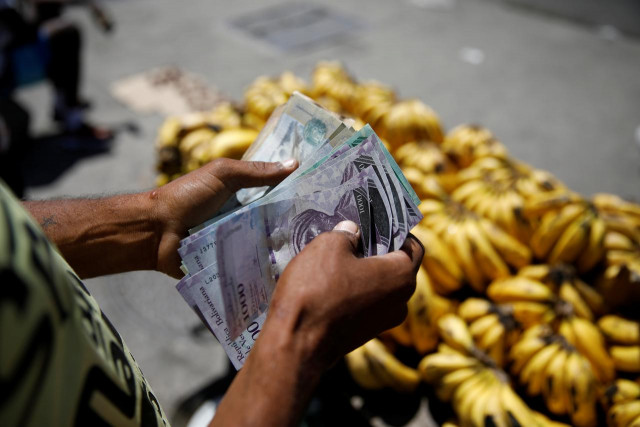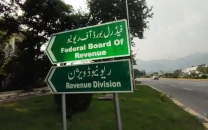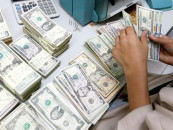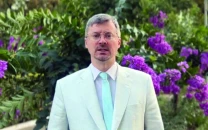Understanding inflation problem
To rein in inflation, govt needs to ensure stable exchange rate, steady money supply

Inflation is the buzz word in Pakistan. From ostentatious drawing rooms to the perilous pavements, everyone is talking about the calamities of inflation. But it’s easy to curse than cure. So let’s investigate.
There are broadly three types of inflation – demand-pull inflation, cost-push inflation and monetary inflation.
Demand-pull inflation is generally good if it is in a controlled proportion. In this case, prices generally rise due to a rise in aggregate demand. Text book contributors of aggregate demand are the following: consumption, investment, government expenditure and net exports.
An increase in any of the above factors is generally beneficial for the overall health of the economy.
Cost-push inflation strikes primarily due to a reduction in aggregate supply. Increase in taxes and rise in cost of doing business generally contribute to the cost-push inflation. This form of inflation is seldom good for any economy.
Monetary inflation is the worst form of inflation. The problem with this type of rise in price levels is that it is largely irreversible. It occurs when money supply in the economy increases faster than the growth of gross domestic product (GDP). Due to this phenomenon, the money loses its lustre.
Read: PPP, PML-N slam govt over high inflation
Pakistan’s case
When the current government came in, the country inherited a current account deficit of almost $20 billion, which by all accounts was highly precarious.
Policymakers were left with the unpopular choice of leaving the feeble rupee at the mercy of market and they did so. This quite logically took the rupee-dollar parity to Rs168 per US dollar. From there onwards, the country witnessed the inflationary spiral.
The devil of cost-push inflation was unleashed. As we are primarily a net importing country, the cost of raw material increased by almost 30-40%.
Due to this increase in costs, the aggregate supply in the economy was forced to undergo an un-glorious retreat, causing upward pressure on the general price level.
Coupled with the dent of depreciation, the economy was also jolted heavily with the increase in policy rate, which added more burden to the ailing economy.
The primary purpose of raising the interest rate is generally to stabilise an overheated economy. Sadly, the economy was facing more cost pressure from the supply side.
Therefore, raising the interest rate at that point in time was like curing a disease from the medication for another disease.
The interest cost rose and businesses faced a second round of cost increase. These measures brought long-term investment projects to a halt and managing working capital requirements also became difficult.
From this point onwards, cost was only the second most important factor in this story of inflation. Expectations of future inflation were the first and foremost cause, which kept on fueling the expectations and hence the Consumer Price Index (CPI).
These expectations of further inflation in future become a self-fulfilling prophecy.
Although the rupee gained almost 8% of its lost ground (Rs168-155 per US dollar), the inflation is not retreating. The policy rate has also been reduced to previous levels, but to no avail. As they say, “Prices are downward sticky.”
The government was also constrained through other avenues. It had to agree to various covenants of international financial institutions wherein power tariffs were raised, contributing to the price increase and more importantly to the expectations of inflation.
Another source of inflation in Pakistan is the monetary inflation, ie inflation through increase in money supply.
From July 2019 to March 2021, the money supply (M3) in Pakistan increased by a staggering 23.54%. Surely, the GDP growth failed to keep pace with the wheels of money.
The silver lining in this story is that the growth in money supply from July 2020 to March 2021 is only 5.2%. This signals the course correcting measures the government is taking.
Read more: PTI government blames IMF for high inflation
The road ahead
With only a 5.2% increase in money supply in the current fiscal year, relatively stable exchange rate and reduced policy rate, the government has valiantly and gallantly fought on all three fronts of inflation: monetary, cost-push and demand-pull respectively.
The policymakers must be appreciated for putting up a good fight. However, times ahead are tough. With a 134% increase in trade deficit in May 2021, there is very little respite for the policymakers.
The exchange rate will feel the upward pressure on the back of rising imports and to fuel the promised growth, the pumping of money supply may have to be resumed.
If the government wants to keep the devil of inflation in check, it needs to focus on these two things: a stable exchange rate and a steady money supply. Otherwise, the hard-earned fruits will be destroyed.
The writer is a banker and teaches economics
Published in The Express Tribune, June 21st, 2021.
Like Business on Facebook, follow @TribuneBiz on Twitter to stay informed and join in the conversation.



















COMMENTS
Comments are moderated and generally will be posted if they are on-topic and not abusive.
For more information, please see our Comments FAQ